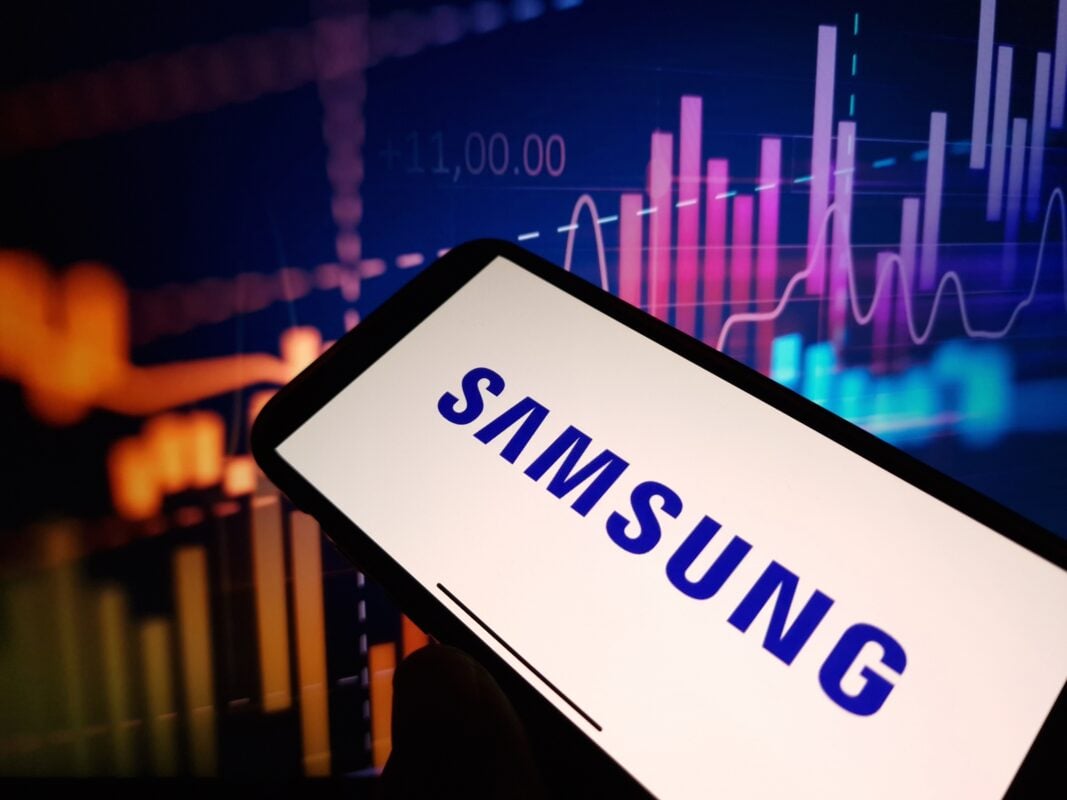TLDRs;
- Samsung stock closed at ₩91,600 (-1.82%), showing limited movement despite record Q3 profit guidance.
- Company forecasts ₩12.1T ($8.48B) operating profit, its highest in three years, driven by AI chip demand.
- Semiconductor division earned an estimated ₩5T, boosted by soaring DRAM and NAND prices.
- Analysts warn of potential memory chip oversupply in 2026, which could pressure prices.
Samsung Electronics Co. (005930.KS) stock remained relatively unchanged on the Korea Stock Exchange (KSE) Monday with Shares closing at ₩91,600, down ₩1,700 (-1.82%) despite reporting its most profitable quarter in three years.
The muted stock movement reflects a market that had largely priced in Samsung’s rebound, following weeks of anticipation over the company’s memory chip recovery. Analysts noted that while the earnings beat consensus forecasts by a wide margin, investors are now focused on the sustainability of this performance amid signs of cooling demand in 2026.
“Samsung’s turnaround in profitability is impressive, but much of this optimism has already been factored into its valuation,” said a Seoul-based semiconductor analyst. “The next test will be maintaining pricing power as supply ramps up across the industry.”

Samsung Reports Strongest Quarter Since 2022
Samsung Electronics released its preliminary third-quarter results for 2025, forecasting operating profit of 12.1 trillion won (US$8.48 billion) and sales of around 86 trillion won (US$60.24 billion), based on Korean International Financial Reporting Standards (K-IFRS).
The results mark a 24% beat over market expectations and represent Samsung’s first quarter in more than a year to exceed 10 trillion won in operating profit. For comparison, the company reported 4.7 trillion won (US$3.29 billion) in Q2 2025 and 9.2 trillion won (US$6.45 billion) in Q3 2024.
The surge highlights a sustained recovery in the global semiconductor market after a prolonged downturn. Higher prices for DRAM and NAND chips, driven by a resurgence in AI-related computing demand, were the primary factors behind the strong performance.
Semiconductor Division Drives Growth
The backbone of Samsung’s Q3 success lies in its Device Solutions division, which oversees semiconductor manufacturing. The unit is estimated to have generated at least 5 trillion won in operating profit, up from just 400 billion won in Q2 2025, a twelvefold increase quarter-over-quarter.
📈 Earnings Alert $005930.KS – Samsung 3Q OP Beats Estimates:
∙ Operating profit 12.10 trillion won, est 9.7 trillion won
∙ Sales 86.00 trillion won, est 83.58 trillion wonhttps://t.co/rVM5TXjOQ1 pic.twitter.com/IJ85U2HYxe— Smartkarma (@smartkarma) October 13, 2025
The improvement is tied to a dramatic recovery in memory chip pricing. DRAM prices soared more than 170% year-on-year, while average selling prices rose by 7% for DRAM and 6% for NAND flash memory in Q3. The rebound was fueled by growing demand for AI data centers, cloud infrastructure, and high-performance computing hardware, which rely heavily on advanced memory chips.
Samsung’s momentum was further boosted when NVIDIA certified its High Bandwidth Memory (HBM) for use in AI accelerators. This approval could secure Samsung new supply agreements in the AI semiconductor market, a segment expected to nearly double in value to $34 billion by 2025, according to industry projections.
AI Infrastructure Push Strengthens Outlook
Global demand for AI infrastructure continues to redefine the semiconductor landscape, and Samsung appears well-positioned to benefit. The shift toward generative AI and large language model (LLM) computing has accelerated the need for advanced memory solutions, with hyperscale cloud providers rushing to lock in supply ahead of projected shortages.
Analysts at Goldman Sachs noted that DRAM supply remains tight as manufacturers transition production from legacy DDR4 to DDR5 and HBM technologies. The resulting bottleneck has allowed suppliers like Samsung to command higher prices and restore profitability after two years of market weakness.
However, the same report warns that this favorable cycle could fade by 2026. As Chinese manufacturers begin mass-producing HBM3 memory, the market may experience a supply glut, leading to potential double-digit price declines.






